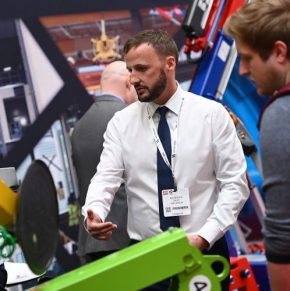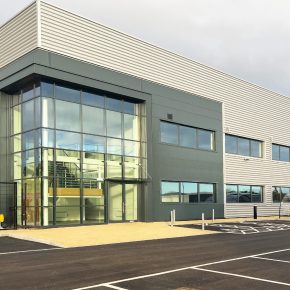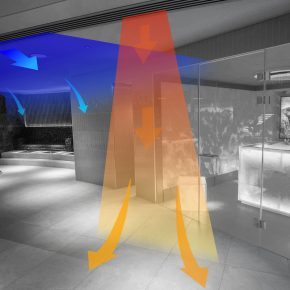How many animals can a forklift carry?
How many animals can a forklift carry?
If you work in warehousing, construction or production, youre likely to require a forklift truck to assist with heavy lifting and handling.
The problem is that there are so many different types of forklift, so finding the right one for the job at hand can be difficult.
If you invest in one too large for your premises or requirements, youll be wasting money and fuel, and could make manoeuvring very difficult.
On the other hand, if you cut corners and get one too small to accommodate your requirements, it could reduce the efficiency of your workplace.
Thats why Health and Safety Training Ltd have put together this simple infographic, so you can get a better idea of the weight each type of forklift can carry.
Toyota Pedestrian powered pallet truck LWE250
Maximum Load Capacity: 2500kg
Maximum Travel Speed: 6 km/h
The Toyota LWE250 is a simple pedestrian operated forklift, with an ergonomic tiller arm and fingertip controls to ensure easy and precise operation. They are compact in size with a tight turning circle, so perfect for environments with limited space for maneuvering.
This particular truck has a lifting capacity of up to to 2500kg, which despite its small size, is the equivalent of lifting a large truck! This makes it particularly useful in smaller factories as a great deal of stock can be easily moved in tight spaces.
Toyota Counterbalance Truck 7FGCU70
Maximum Load Capacity: 7000kg
Maximum Travel Speed: 21 km/h
A counterbalance truck, like the Toyota 7fGCU70, is the next step up. It can lift up to 7 tonnes, in small spaces, without the risk of the truck overturning.
It features SAS (System of Active Stability) technology which ensures that no matter what the weight, it does not overbalance the truck. It also has compact cushion tyres which means that loads the equivalent of 3 cubic meters of concrete can be lifted on single wheels, ideal for stacking stock in tight spaces.
JCB Rough Terrain Forklift 940
Maximum Load Capacity: 4000kg
Maximum Travel Speed: 29 km/h
A rough terrain forklift, such as the JCB Forklift 940, is most used in outdoor construction and demolition scenarios as it can easily navigate uneven ground. It also has an impressive top speed of 29km/h, so it can cover large building sites quickly, transporting materials to where they are needed.
The load capacity is smaller than a counterbalance forklift, at around 4 tonnes (4 pallets of bricks), but this is usually sufficient for most building sites.
JCB Telescopic Handler Forklift 550-80
Maximum Load Capacity: 5000kg
Maximum Travel Speed: 29km/h
The JCB 550-80 is a telescopic handler with the capacity to lift up to 5 tonnes. It utilises technology to ensure it can lift loads much higher than normal forklifts, without the risk of tipping.
The main use of this type of forklift is in warehousing and storage as it can easily stack palletised goods, so more stock can be stored for increased production flow.
Hubtex Industrial Side Loader
Maximum Load Capacity: 50,000kg
Maximum Travel Speed: 24 km/h
An industrial sideloader truck, like the Hubtex Industrial Side Loader, has a huge lifting capacity of between 2 and 50 tonnes! It features a large flat lifting bed, instead of forks, which allow the largest of loads to be evenly distributed and transported safely.
50 tonnes is about the same weight as a fully loaded oil tanker, so you can see how this forklift will most likely be used for immense specialist projects, such as bridge building, machinery installation and steel erection.
Open the full infographic from Health andamp; Safety Training Ltd on Animals andamp; Forklifts
Health andamp; Safety Training Ltd are a leading provider of health and safety training courses and programmes
Latest news

2nd April 2025
FIT Show 2025 Launches Innovative Marketplace Feature to Enhancing Value for Installers
FIT Show, the UK’s leading event for the window, door, flat glass, hardware, and roofing industries, is excited to announce the launch of a brand new Marketplace feature at its upcoming 2025 event (Birmingham NEC, 29 April – 1 May).
Posted in Architectural Ironmongery, Articles, Building Industry Events, Building Industry News, Building Products & Structures, Doors, Exhibitions and Conferences, Glass, Glazing, Hand Tools, Innovations & New Products, Plant, Equipment and Hire, Power Tools, Restoration & Refurbishment, Retrofit & Renovation, Roofs, Seminars, Training, Windows
2nd April 2025
Hi-spec deployment of EJOT Colorfast at new Birmingham logistics park
EJOT Colorfast fasteners have been used extensively in the construction of eight new high-specification warehousing and logistics buildings at the Urban 8 Logistics Park in King’s Norton, Birmingham.
Posted in Articles, Building Industry News, Building Products & Structures, Building Systems, Case Studies, Facades, Restoration & Refurbishment, Retrofit & Renovation, Roofs, Walls
2nd April 2025
SWA member delivers ‘fresh Hope’ for university’s Sustainable Building department
A detailed contract to restore an iconic Art Deco building in the heart of Birmingham’s Jewellery Quarter was carried out by Steel Window Association member, The Window Repair Company (Northwest) Limited.
Posted in Articles, Building Associations & Institutes, Building Industry News, Building Products & Structures, Building Systems, Case Studies, Glass, Glazing, Restoration & Refurbishment, Retrofit & Renovation, Steel and Structural Frames, Sustainability & Energy Efficiency, Windows
1st April 2025
Gilberts Takes Thermal Comfort to New Heights
Gilberts Blackpool is continuing to build on its reputation as a pioneer with the unveiling of ThermaAstute™ – the most extensive range of thermally sensitive diffusers in the market.
Posted in Air Conditioning, Articles, Building Industry News, Building Products & Structures, Building Services, Facility Management & Building Services, Heating, Ventilation and Air Conditioning - HVAC, Innovations & New Products, Restoration & Refurbishment, Retrofit & Renovation, Sustainability & Energy Efficiency
 Sign up:
Sign up: